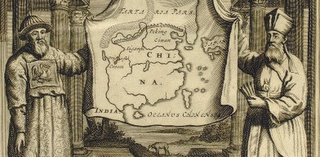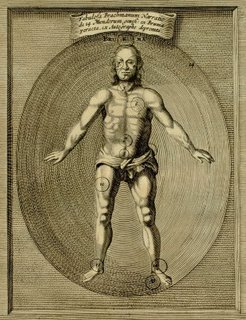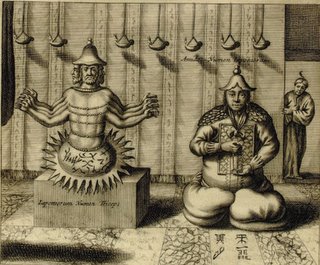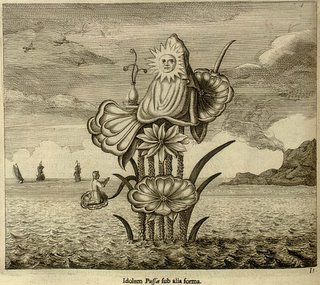The Farmscape Exhibition - Remembering the Family Family Farm - 150 Years of American Prints at Max Kade-Erich H. Markel Department of Graphic Arts, Spencer Museum of Art, University of Kansas.
Books~~Illustrations~~Science~~History~~Visual Materia Obscura~~Eclectic Bookart.
"In the centre are those who are undergoing various punishments. Below these is depicted an unfortunate about to enter and begging for mercy, and near him is to be seen another who is reluctant to go forward and is being dragged and goaded onward. At the bottom of the picture is Thagyá judging the deceased; behind him are the four executioners. At the four corners are the abodes of the four great executioners -Yamahlá, Yamada, Yamaká and Yamamin, the abode of the last being represented as empty"





 If I was preparing BibliOdyssey posts on paper I think I'd have a rubber stamp that said: 'These look cool, but I can't tell you much about them because the translation software is just appalling'.
If I was preparing BibliOdyssey posts on paper I think I'd have a rubber stamp that said: 'These look cool, but I can't tell you much about them because the translation software is just appalling'.
[but I complain too much] Or at least, I can say that these images come from a collection of 141 plates known as the 'Schijnvoet Konstboeck' from the early 18th century. Simon Schijnvoet (sometimes spelled Schynvoet or Schynvoot) was a Dutch master builder, designer, architect, horticulturist, poet and collector.
Or at least, I can say that these images come from a collection of 141 plates known as the 'Schijnvoet Konstboeck' from the early 18th century. Simon Schijnvoet (sometimes spelled Schynvoet or Schynvoot) was a Dutch master builder, designer, architect, horticulturist, poet and collector.
[There is mention of Maria Sybilla Merian and Surinam but I don't understand the connection] The illustrations were produced by Catharina Lintheimer, Alida Withoos, Johannes Bronckhorst and Pieter Holsteijn and are online at the Wageningen UR Library in Holland. It's an old website and this thumbnail page is a bit of a load - don't be fooled, the images look much better when enlarged.
The illustrations were produced by Catharina Lintheimer, Alida Withoos, Johannes Bronckhorst and Pieter Holsteijn and are online at the Wageningen UR Library in Holland. It's an old website and this thumbnail page is a bit of a load - don't be fooled, the images look much better when enlarged.
Previously: The Tulip Book.
'I wasn't surprised by the idea that people used to laboriously do something that computers now do automatically...The surprising thing about these drawings is that they were gratuitous -- they just did not need to be that nice. The illustrator could have simply drawn what was necessary — a partial sphere with a bit of shading, or whatever.'



'..the illustrators put a dazzling amount of attention into the shading and the different line-thicknesses and a dozen other details that are not only gratuitous, but which you are generally expected to not even perceive!'
 Sean M Burke has a different sort of online gallery - he has scanned his favourite images from a dozen or so engineering / industrial / mechanical / pneumatic design texts from the first half of the 20th century. [Thanks again D]
Sean M Burke has a different sort of online gallery - he has scanned his favourite images from a dozen or so engineering / industrial / mechanical / pneumatic design texts from the first half of the 20th century. [Thanks again D]










